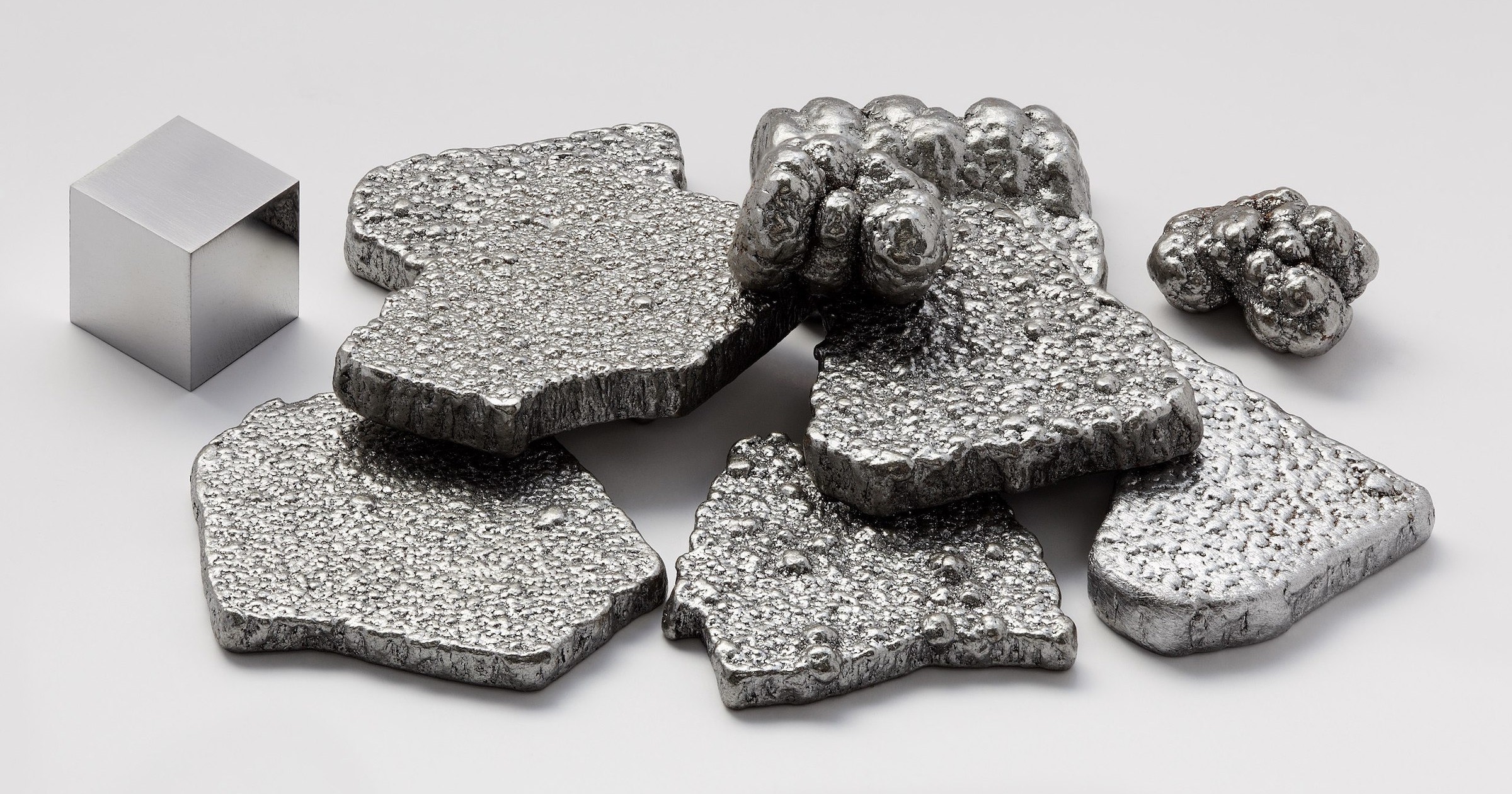No Iron, No Life: Intelligent Design in Iron Availability

Life relies on iron, but it is toxic, too. And it’s hard to get this scarce resource where it’s needed. Here is another case of fine-tuning that adds to the many Goldilocks “just right” conditions for life on our planet.
The Biophysics of Iron
Evolution News has reported on the gentle handling of iron by enzymes in cells, such as this discussion by Dr. Howard Glicksman, in which he describes the delicate interplay of iron and oxygen in hemoglobin that makes our blood red. He tells how specialized enzymes control acquisition, transport, and control of iron. Indeed, the building blocks of hemoglobin that incorporate iron, called heme molecules, are toxic within cells and also must be carefully handled, as this article relates.
Just how carefully can be seen in two animations of the CcsBA enzyme from research at Washington University at St. Louis. The enzyme molds itself around a heme (pictured green, with an orange iron atom at its center), preparing and assembling it for transport. It took the research team three decades to figure this out, and this is just the bacterial version!
As fascinating as these irreducibly complex systems are individually, they assume that iron will be available in the environment. How did that happen?
The Geophysics of Iron
Iron availability on the earth must be finely tuned. Iron in the Earth’s core, though abundant, will not be of any help to plant life on the surface or to ocean life. We observe that iron is abundant in crustal minerals, as seen in the colorful iron oxides that bestow reddish colors on many desert walls (and the planet Mars). Iron is also abundant in olivine, which can be delivered from the mantle by volcanoes. In a recent article, Evolution News described how “meteoric dust” from the solar system can gently rain iron onto the oceans for photosynthetic microbes like diatoms to use. But how did iron become finely tuned as to quantity and availability?
Geophysicists presume that iron was produced by supernovas and incorporated into the solar disk from which the planets are thought to have accreted. Most of that iron, however, would have sunk to the core. Fortunately, the core and mantle separated on Earth, allowing delivery of iron to the surface via plate tectonics. Dissolved iron in the ocean is sensitive to the amount of oxygen in the atmosphere. Evolutionists have long told about a dramatic rise of atmospheric oxygen in the so-called “Great Oxygenation Event” (GOE) some 2.4 billion years ago. (Oxygen is also claimed to be responsible for the Cambrian explosion; see here.) That narrative, though, must coincide with the availability of iron for eukaryotic life. It’s a challenge for them to keep everything in balance as the sun brightened, the planet cooled, the oceans formed, the first cells emerged, iron fell out of the oceans, and complex life appeared.
The Geochemistry of Iron
Now four European scientists propose that “Temporal variation of planetary iron” was “a driver of evolution.” Writing in PNAS, Wade et al. tackled this question of juggling the elements while the world was changing without upsetting the Goldilocks requirements.
Iron is an irreplaceable component of proteins and enzyme systems required for life. This need for iron is a well-characterized evolutionary mechanism for genetic selection. However, there is limited consideration of how iron bioavailability, initially determined by planetary accretion but fluctuating considerably at global scale over geological time frames, has shaped the biosphere. We describe influences of iron on planetary habitability from formation events >4 Gya and initiation of biochemistry from geochemistry through oxygenation of the atmosphere to current host–pathogen dynamics. By determining the iron and transition element distribution within the terrestrial planets, planetary core formation is a constraint on both the crustal composition and the longevity of surface water, hence a planet’s habitability. [Emphasis added.]
They describe iron as a “scarce but vital nutrient” that became less available after the GOE removed much of the water-soluble ferrous iron (Fe2+) from the surface and oceans and replaced it with insoluble ferric iron (Fe3+) that dropped to the ocean floor. This, they argue, created “evolutionary pressure” to cause the rise of eukaryotes and multicellular animals that could recycle iron.
These developments allow life to more efficiently utilize a scarce but vital nutrient. Initiation of terrestrial life benefitted from the biochemical properties of abundant mantle/crustal iron, but the subsequent loss of iron bioavailability may have been an equally important driver of compensatory diversity.
Nice how that all worked out. Enzymes just emerged to make the best of a hard situation. Oxygen drove Cambrian animals to explode onto the scene. Iron drove land animals to go forth and diversify. The creative powers of atomic elements must be considered appreciable.
Two of the authors of the paper, Hal Drakesmith and Jon Wade at Oxford University, simplified in a discussion at The Conversation. Oddly, they describe the geophysics of iron as an evolutionary benefit. “Behaviour that optimised the acquisition and use of iron would have had a clear selective advantage,” they proclaim. And since iron tuning worked out so well on Earth, they think astrobiologists can seek other planetary systems that also hit the iron lottery as markers for space aliens.
Iron is not only essential for life; it is essential for geophysical processes, too.
The amount of iron in the mantle regulates several planetary processes, including the retention of surface water. And without water, life as we know it cannot exist. Astronomical observations of other solar systems may enable estimates of a planet’s mantle iron, helping to narrow the search for planets capable of harbouring life.
They discuss the unique properties of iron for life:
As well as contributing to planetary habitability, iron is fundamental for the biochemistry that allows life to happen. Iron has a unique combination of properties, including the ability to form chemical bonds in multiple orientations and relative ease of gaining or losing one electron. As a result, iron mediates many biochemical processes in cells, especially by enabling catalysis — a process that speeds up chemical reactions. Metabolic processes that are vital to life, such as DNA synthesis and cellular energy generation, rely on iron.
No iron, no life. But this essential element must be available in usable form, and its toxicity must be controlled. Molecules called siderophores somehow appeared after the GOE, allowing bacteria to capture ferric iron from oxidized minerals. Then, eukaryotes learned how to steal this iron from bacteria, leading to parasitic and symbiotic relationships. “Thanks to this process, they continue, “both parties continually evolved to attack and defend their iron resources.” And then organisms learned another trick: recycling. The story becomes ironic in more than one sense.
From an iron-biased view, infection, symbiosis and multicellularity provided different but elegant means for lifeforms to counteract the limitation of iron. The need for iron may have shaped evolution — including life as we know it today.
Earth demonstrates the importance of being ironic. The combination of both an early Earth with biologically accessible iron and the subsequent removal of iron during surface oxidation, has provided unique environmental pressures facilitating the evolution of complex life from simpler precursors.
The Mathematics of Iron
And so, the narrative goes, things just worked out by luck. Our planet accreted inside the habitable zone with enough iron-fortified supernova dust to form a suitably sized sphere. As the iron descended in a molten Earth, its core separated from its mantle by good fortune. The mantle retained enough iron — a scarce resource — for delivery to oceans. It came in a soluble form for microbes to find before the GOE reduced it considerably. This reduction put “selection pressure” on the microbes to evolve enzymes able to use the insoluble form from rocks. When complex eukaryotic cells appeared, they stole it, leading to an arms race that sometimes ended in a trade agreement or in guerilla warfare (i.e., pathogenesis). That put evolutionary pressure on complex life to grow bigger and stronger. Both sides also learned how to recycle iron for a sustainable future. Jon Wade summarizes our good fortune:
‘The initial amount of iron in Earth’s rocks is ‘set’ by the conditions of planetary accretion, during which the Earth’s metallic core segregated from its rocky mantle,’ says co-author Jon Wade, Associate Professor of Planetary Materials at the Department of Earth Sciences, University of Oxford. ‘Too little iron in the rocky portion of the planet, like the planet Mercury, and life is unlikely. Too much, like Mars, and water may be difficult to keep on the surface for times relevant to the evolution of complex life.’
After the GOE, he says, “gigatons of iron dropped out of sea water, where it was much less available to life forms.”
‘Life had to find new ways to obtain the iron it needs,’ says co-author Hal Drakesmith, Professor of Iron Biology at the MRC Weatherall Institute of Molecular Medicine, University of Oxford. ‘For example, infection, symbiosis and multicellularity are behaviours that enable life to more efficiently capture and utilise this scarce but vital nutrient. Adopting such characteristics would have propelled early life forms to become ever more complex, on the way to evolving into what we see around us today.’
The Irony of Iron: From Tale to Cause
As an exercise, count the number of lucky breaks that had to occur for the evolutionary story to work: everything from the formation of sufficient iron in supernovas to the arrival of enzymes to use it. The low probabilities of each independent requirement being met within tight constraints multiply out to a vanishingly small overall probability. Then take out the circular reasoning: i.e., “we’re here, therefore we evolved.” Then subtract the personification, a logical fallacy that treats natural selection like an engineer. What’s left? A tale of sheer dumb luck.
There is an alternative explanation. A mind with the foresight and intelligence to plan all these necessary steps, tuning them with high accuracy with the goal of building a sustainable, interacting biosphere, comports with our uniform experience of how highly complex systems originate. In science, appealing to necessary and sufficient causes is preferable to appealing to sheer dumb luck. And so for the biophysical, geophysical, geochemical, and mathematical properties observed in iron utilization by living organisms, intelligent design is the explanation a logically consistent and impartial scientist should prefer.


